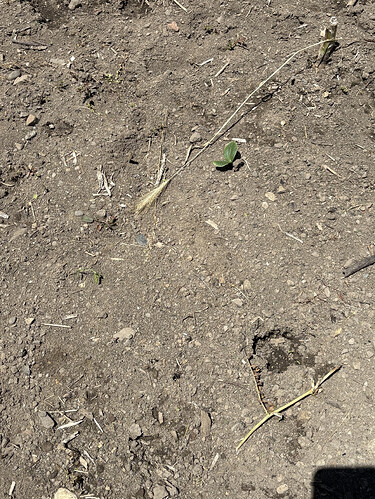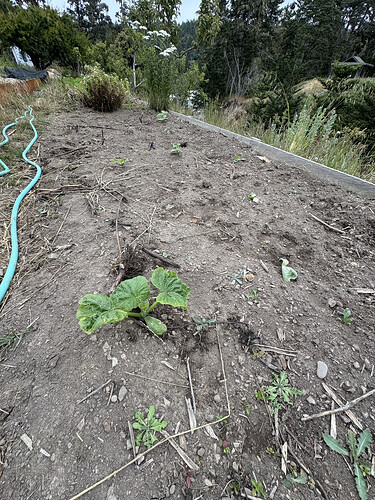This is year 2 of the cucurbita pepo adaptation project. We are working on adapting hulless pumpkins (cucurbita pepo) to our cooler coastal climate. We chose hulless pumpkins because it can be difficult to grow crops with high levels of fat in our climate. We are excited about growing calorically dense staple crops to help create more access to nutritionally dense foods. In addition to selecting for cold-hardiness, we are also selecting for a no-till, low input system (no greenhouse, heat mats, or inputs beyond a small amount of compost). We are hoping over time to end up with a hulless pumpkin with not only tasty seeds but also tasty flesh. For this adaptation project we started last year with many different varieties of hulless pumpkins-- actually almost every type we could find online that was more resilient to the cold. The idea was to maximize diversity and to select and stabilize from there. This mix even included some hybrids that are bred for tasty flesh and tasty seeds. The initial varieties included are: Naked Bear F1 (Territorial Seeds ), Styrian (Siskiyou Seeds), Lady Godiva (Baker Creek), Kakai (Baker Creek), Pie Pita F1 (High Mowing Seeds), Emerald Naked Seeded Pumpkin (Experimental Farm Network). Lastly, there are hulless pumpkin seeds we just received that have been grown and saved on the coast. Last year we grew all of these out and saved all of the seeds. Many demonstrated hardiness for the cold and the low input system, though we have yet to find one with tasty flesh, even among the hybrids. This year I added in 2 additional seed varieties: hulless acorn from GRIN and sweetnut from Baker Creek. The hulless acorn from GRIN doesn’t seem hulless from appearance, but perhaps the hull is not very thick-- I am incorporating it anyways for the potential of the sweet flesh.
Last year it was found that seeds started earlier than June 1st had very low germination (likely still too cold and wet – they were started in flats outdoors), so this year I started the seeds on 6/6. I started half in flats and direct seeded the other half (enough for 200 square feet total). In the picture below you can see the prepared 100 square foot area for the hulless pumpkins on the right. Once the plants in the flats are ready, we will prepare an additional 100 square feet directly behind the direct seeded area and will transplant the seedlings.
Close up of the direct seeded area
6/17 some of the first hulless pumpkins are emerging
7/7 The final survivors from direct seeding in the bed emerge, including ones in my home garden which were started a bit later (maybe by 2 weeks) - I am now including the ones from my home garden (similar climate to the Inn, but better soil) since I want seeds from a larger population
7/9/25 I transplanted the squash that survived in the flats (low germ rates-- only 9 plants which is the same # as the bed-- so instead of cultivating an additional 100 square feet to plant the transplants, I plugged them into the bed with the DS squash but flagged the DS ones to continue the observations on any differences in health between DS and TPing.
7/23/25 None of the sweetnut from baker creek seeds have come up so far, and only one of the hulless acorn from GRIN, which is now ready for transplant.
7/23/25: the squash is coming along-- while the survival rate / ratio of healthy to unhealthy squash between DS and TPs is similar, it does seem that among the ones that have survived and are fairly healthy, the DS seeds are much fuller and greener than the TP ones.
On this same day, here is a photo of ones in my home garden (50 square foot area)-- more consistent but just a bit more behind due to a later planting date-- these were all DS
The climate this year in mendocino has been particularly cold-- colder than last year, with most days being very foggy and few days of sun.
8/13/25 Squash at the Inn starting to fill out a bit more with 2 extremely large and healthy plants (both DS). Those ones are so strong that they are almost crowding out/shading out the smaller squash. Hopefully there will be a large enough population to maintain genetic diversity.
8/11/25 squash at my home garden a bit more evenly happy, a bit behind the squash at the inn but still doing well and filling in.











